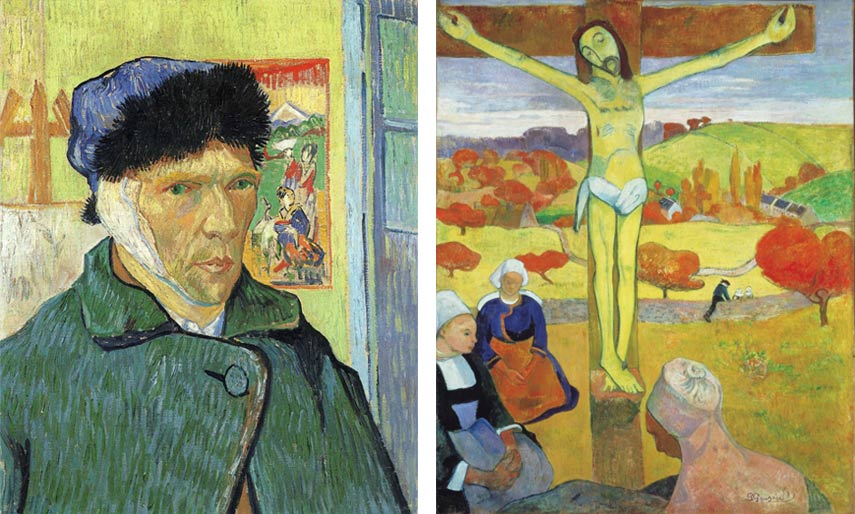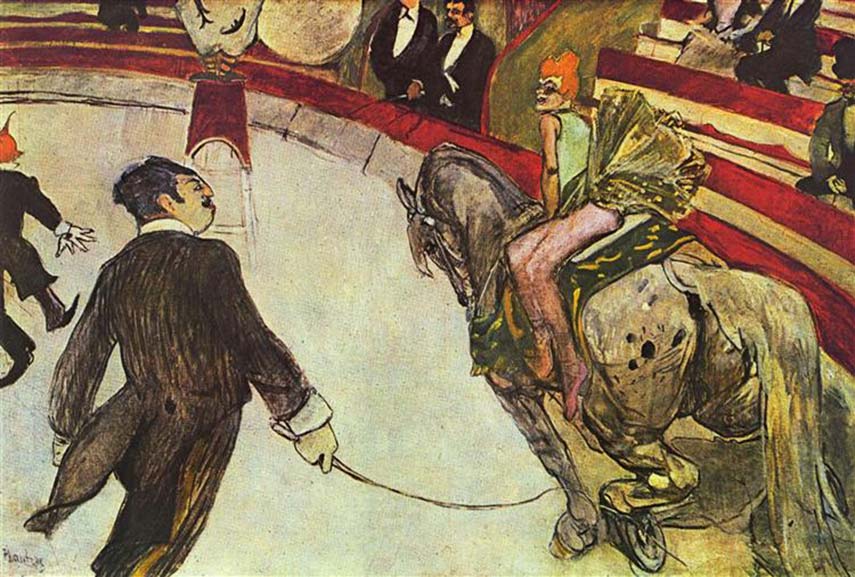What is Post-Impressionism and How Does It Influence Art Today?
Post-impressionism art movement, like the Impressionism, is considered to be one of the earliest avant-garde movements of the 19th century. The concerns of the major and most influential painters and sculptures that helped to create the impressionism style produced the works that focused on the investigation of the perception of the eye, the presentation of the shifting nature of light, and the depictions of the everyday life in the streets, parks, cafés, and bars. But, what is Post-Impressionism? Following from the predecessors of the Impressionism movement, Post-Impressionism was the next generation of the avant-garde artists that took a variety of different approaches, but what glued them together was their rejection of the focus on the opticality of the Impressionism movement. Emerging as a reaction against the Impressionists’ concern for the naturalistic depiction of light and color, Post-impressionists fought to bring back the focus on the subject matter and the structure in paintings that they felt was lost. Dominated by the immense personalities, such as Paul Gauguin, Paul Cézanne, Georges Seurat, Vincent van Gogh, and Henri de Toulouse-Lautrec, the Post-impressionists took different approaches and continued building on the advances of the previous art movement.

The Elements of Post-Impressionism Art
Breaking away from the naturalism of Impressionism and focusing their art upon the subjective vision of the artists, rather than following the traditional role of the art as a window onto the world, artists of the Post-Impressionism movement focused on the emotional, structural, symbolic, and spiritual elements that they felt was lacking from Impressionism. The ‘depiction of the passing moment’ of impressionism paintings, such as the painting series of Claude Monet, for the emerging new authors, created the paintings that lacked structure. Attempting to attack this issue, the Post-Impressionism art movement seems to be divided into two major streams of thought.
Similarly to the previous division of the Neo-Classical and Romantic art, the division of Post-Impressionism movement also existed onto a more structural, formal, nearly scientific design style of artist Georges Seurat with his dot theory, later known as pointillism and Paul Cézanne, who concentrated his practice on the research of the color planes, while on the other, the art of French painter Gauguin, van Gogh, and Toulouse-Lautrec emphasized the expression of emotions and sensations through light and color. Out of these two trends of Post-Impressionism art, emerged the extremes of the individual styles of the 20th-century art, ranging from Cubism to Surrealism.

The Different Approaches, Concepts, and Styles
The earliest indication of the new trend that broke with Impressionism was the painting style of Georges Seurat. He developed a style of painting known as Pointillism, which refers to the use of a point or dot as the basis for the construction of a painting. His method of painting, scientifically thought after, following a rigorous pattern design and employing even one of the oldest compositional tools, the golden section, kept the bright and unmixed color scheme of the Impressionism paintings and open-air themes but added a design based on geometrical shapes. The perfectly balanced compositions of Seurat’s paintings differ immensely from the vibrant and screaming paintings of Vincent van Gogh. Attempting to express the deepest emotions, and the expressions of his tormented soul, van Gogh’s paintings relied upon the saturated colors and broad brushstrokes to evoke the inner turmoil of the artist. Both van Gogh and Paul Gauguin rejected the ‘ abominable error of naturalism’ in favor of a more personal, spiritual expression.
“ I dream of painting and then I paint my dream.” - Vincent van Gogh
Van Gogh and Gauguin shared an interest in symbolic content and produced images that were subtracted from their natural appearances, where the artist’s feelings about the subject matter, and his views on the aesthetic consideration of color, line, and form, were the most crucial elements for the creation of their paintings. Van Gogh was also influenced by a variety of sources, and his love of the stylized representations of Japanese woodblock prints was also evident in the work of Henri de Toulouse-Lautrec, whose unique depictions of the Parisian nightlife resulted in paintings and lithographs that were built with the strong outlines and flat planes of color of the Japanese woodblocks.
Check out more works by Gauguin on our marketplace!

What We Owe to Post-Impressionism
Most consider the investigation of the pictorial form and the exploration of the underlying formal structure of the subject matter depicted, that formed the practice of Paul Cézanne, as the most important and influential heritage that followed from the movement. His ideas that the simplest geometrical shapes form the underlying structure of any subject matter glued Post-Impressionism and Cubism, and were immensely important for the influential artists of modernity, such as Henri Matisse and Pablo Picasso, who even went so far as to call Cézanne “ the father of us all”. This link was not the only one since the aesthetic impact of the movement influenced also Expressionism and Fauvism as well. Some would even go far to say that the contemporary movements that are identity-based, such as Feminism art, could be linked as well due to the major concern of the artists on their own personal styles and individualism, where the paintings were seen to represent a window into the artist’s mind and soul.
The early focus on abstract patterns, geometrical shapes, and structure on one side influenced the birth of Cubism and Abstract art and the importance of the individual, helped to shape the Expressionism and even the Abstract Expressionism works. Currently, in the broad spectrum of works that create the contemporary art, the heritage of the Post-Impressionism is not something that could be dismissed. The major trends today, still experiment with color, form, pictorial planes, and we are witnesses to the rise of geometrical abstract works. The need for experimentation and the re-definition of everything stands at the base of contemporary art today and stood at the base of the Post-Impressionism art as well.
Editors’ Tip: The Post-Impressionists
Focusing on the history and the major developments of the Post-Impressionism movement, the book is an excellent guide into the world of the major art figures and the major works produced. The book is an introduction to the Post-Impressionism of the 1880s and 1890s and it explores the movement through the investigation of the major exhibitions, themes, theories and it even focuses on the individual characters of the major figures.
All images used for illustrative purposes only. Featured images in slider: Georges Seurat – A Sunday on La Grande Jatte. Captions, via Creative Commons; Vincent van Gogh – Starry Night Over the Rhone. Captions, via Creative Commons; Paul Cézanne - Rideau Cruchon et Compotier, detail. Image via mostfamousartwork.blogspot.com; Henri de Toulouse-Lautrec – In Bed The Kiss, detail. Image via totallyhistory.com
Can We Help?
Have a question or a technical issue? Want to learn more about our services to art dealers? Let us know and you'll hear from us within the next 24 hours.

